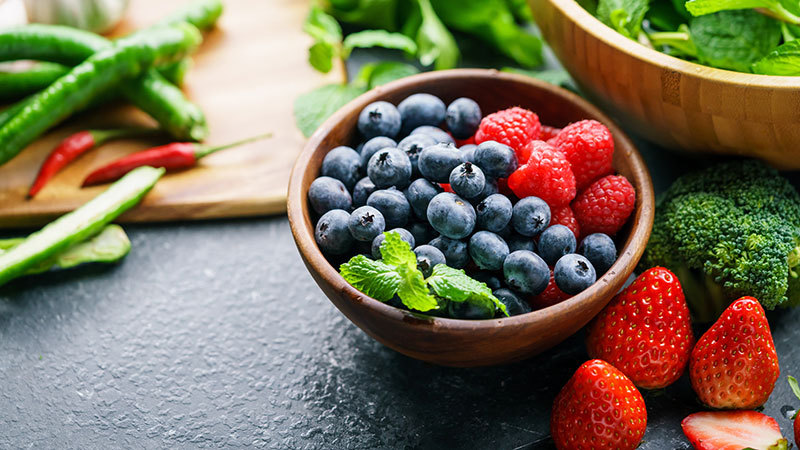We’ve all heard the statistics: Nearly 1 in 5 children in the U.S. are obese, and the rates are higher for children from minority or low socioeconomic backgrounds. Students are coming into your classroom with poor eating habits, little physical activity, and potentially a misinformed or underinformed understanding of how to fuel their bodies properly.
The extent of the problem can feel overwhelming. But teachers can make a big impact even with seemingly small classroom lessons and activities. Check out these tips for teaching nutrition in your classroom to help give your students a healthy start in life.
Get Up to Date with the Science of Nutrition
When you were in school, you probably learned nutrition from the famous nutrition pyramid, which focused on grains as a staple food group. However, studies from the last couple of decades have shown that this model isn’t actually ideal.
Instead, teach your students about the Healthy Eating Plate. On the Healthy Eating Plate, half of your meal should consist of colorful fruits and vegetables, one quarter whole grains, and one quarter protein. This can be challenging for people who are used to basing meals on grains such as bread, pasta, and rice, but being fruit- and veggie-centered can help lower blood sugar and the risk of heart disease and stroke.
To help students flip their thinking on how to fill their plates, consider creating an activity based on the Healthy Eating Plate. If your students are younger, you could have them draw a plate and several types of foods on different colors of construction paper. Then they can fill their plates with the correct proportions of “food.” With older students, you could have them look up or create recipes for well-balanced meals (and maybe assign cooking them as homework).
Use Visuals and Other Free Tools
Teaching nutrition can often involve a lot of details. Categories of foods, nutritional daily values, cooking instructions, portion tips—it’s enough to make anyone’s head spin.
That’s why it’s essential to incorporate visuals into nutrition instruction. Infographics, charts, and posters can help students retain valuable information as they make food choices. The USDA has a plethora of free resources you can use in your class, including lesson plans, handouts, posters, and quizzes.
The FDA offers free and comprehensive texts for teaching nutrition to middle grade and high school students. These texts are full of ready-made classroom activities, videos, and all the information you need to make your students smart consumers. Topics include:
- Using the nutrition facts label
- Serving sizes and calories
- Sugar in beverages
- Sodium in snack foods
- Meal planning
- Healthy eating away from home
The Child Nutrition Sharing Site has also compiled lesson plans, units, and resources created by schools around the country.
Offer Samples
Sometimes students are reluctant to eat or try certain foods because they have preconceptions about whether they’ll like the taste. However, if you can pique their interest in the food, students might be willing to try something new. Here are some ideas from Education World:
- Host a mystery tasting party. Budget permitting, bring a variety of fruits and vegetables to class. Cut them up into bite-size pieces so students can’t easily recognize what they are. Then have students try different foods to see if they can guess what they are. You can provide clues such as nutritional value or what part of the world they’re from to help students guess.
- Have students promote different types of fruits and vegetables. Make peer pressure work for you! Assign students to create presentations on different types of healthy foods to share with the class. Encourage students to challenge each other to sample the foods they present.
- Plan a field trip to an orchard or farm. When planning field trips for the year, consider showing students where healthy foods come from. Seeing how these foods come to be—and maybe even harvesting some for themselves—can stoke students’ excitement for fruits and vegetables.
Bring Cooking to the Classroom
More and more, students are entering adulthood without basic cooking skills. Home economics classes have long ago disappeared from most schools, and the statistics reflect this decline. People between the ages of 15 and 24 spend only about 15 minutes a day on food prep and cleanup, and less than half of that age group considers themselves even “somewhat good” at cooking.
If you’re an administrator or educational leader, consider looking into what it would take to install kitchen tools in your school. Your students will thank you for the investment in their future!
If you don’t have access to any cooking equipment, consider some of these creative solutions from Teachers Pay Teachers:
- Bring in small appliances such as microwaves, blenders, and toasters. You can find recipes or modify existing recipes to work with what you have.
- Ask your cafeteria staff if you can use the school’s stoves or ovens. They might even be willing to participate in your lesson!
- Go virtual. The Goodwill Community Foundation has interactive tutorials to help students learn cooking basics.
More Tips for Teaching Nutrition and Healthy Living
Nutrition is only a small part of teaching students how to be healthy. Physical activity and mental and emotional well-being are all part of helping students grow and develop into healthy adults.







